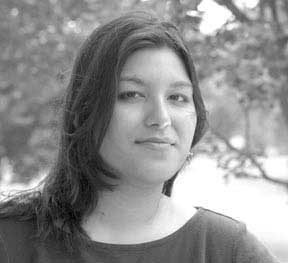Arts
Authorspeak

Interview with S Mitra Kalita.
|
S. Mitra Kalita currently dons two prominent roles as Washington Post education reporter and president of the South Asian Journalist Association. Her career has taken her to many journalistic outlets: the Associated Press in Trenton, NJ, Newsday as a business reporter and to Columbia’s Graduate School of Journalism. What is your view of the silent hostility between the Indian Americans and the Whites in Edison? It’s not necessarily silent. Indians have certainly put up with their share of verbal and even violent hostilities, although they can be accused of being too insular in their early years along Oak Tree Road. You hear a lot of Can you point out the limitations and strengths of a larger more open-ended book format as opposed to a more concise news report? It’s a lot harder, trust me! A part of the challenge is just making sure you have done enough research and observation to back things up. Also, the traditional relationship you have with sources goes out the window. I got close to these subjects, slept over at their houses, formed true relationships with them and then had to step back and tell their stories honestly and, to some extent, dispassionately. My concern with a book like this is that it is only read in Indian circles. I hope it penetrates the mainstream. Because I have worked for mainstream publications, I think I’ve gotten used to having readers of all kinds react to my work. I hope that happens here. How have your readers’ reactions been to the book and specifically to its cast of characters? People seem to be very caught up in their lives! That’s a good thing; it means my words formed a connection with the characters and, in turn, the reader.
What have the Patels’, Kotharis’ and Sarmas’ reactions been to their portrayals in the book? How has the culture clash between your Indian Assamese and American worlds, formed your personality in your perception? Tangible examples: I never dated in high school or even uttered the word “boyfriend” at home, but secretly longed for the popular people in school to like me. My parents were not active volunteers in the school, not because they weren’t interested, but I don’t know if they could relate to the prom or football games. We’ve overcome a lot of it now as I turn to my parents often to get the authentic doses of Indianness one needs in a country that now knows Bollywood, bindis and bhangra. My personality has become quite chameleon-like. I adapt easily to new situations and settings because I lived in so many places growing up. I retained a lot of traditional values and have a very deep relationship with India and my hordes of relatives who still live there. My identity is an evolving one that has taken me from wanting to be a white suburban teenager who wore only Gap to a bohemian desi who donned flowing skirts and scarves to a tight-shirt-wearing club-going desi diva who shook to bhangra and hip hop. Now I suppose I consider myself a combination of all of my environments: Assamese, mainstream Indian and mainstream American. In a sign of how times are changing (and my own self-assertion), I am also demanding more that institutions occasionally cater to me as well. You have referenced Little India magazine a few times in your book. Do you have any special relationship with the magazine? No, but I admire Little India’s work of telling stories of a community from within that community. They, along with Rediff.com, were the only publication I found that had spent some serious time in this ethnic enclave. Do you think the perceptions of second-generation Indian Americans (such as yourself) about the place of race in the American psyche, is markedly different from those of their parents? I think our parents’ generation definitely experienced or currently experience racism, but perhaps might not readily vocalize it as we do. Remember, we have the privilege of birthright, unaccented English and an upbringing of Western ways. I hope this book sheds some light on the diversity that is the South Asian diaspora, generationally, economically, socially. I hope people reading the book might think twice about the circumstances of the man who pumps their gas or the cashier who rings up their groceries. Indian Americans have often been labeled a “model minority” but they are often also a silent minority, hesitant to be involved locally in politics and matters of community. It is only recently that we see this trend being reversed. How can we galvanize more Indian Americans to be active participants in their communities? I hope this book inspires successful Indians to strive for more than economic equality with their neighbors. Political parity is important. As people like Pradip Kothari illustrate, the next challenge for his generation, generally an economically successful group, is to attain political clout. For those who don’t aspire to political office, perhaps the answer is to find other ways to give back to both their own community as well as the larger one. |


You must be logged in to post a comment Login